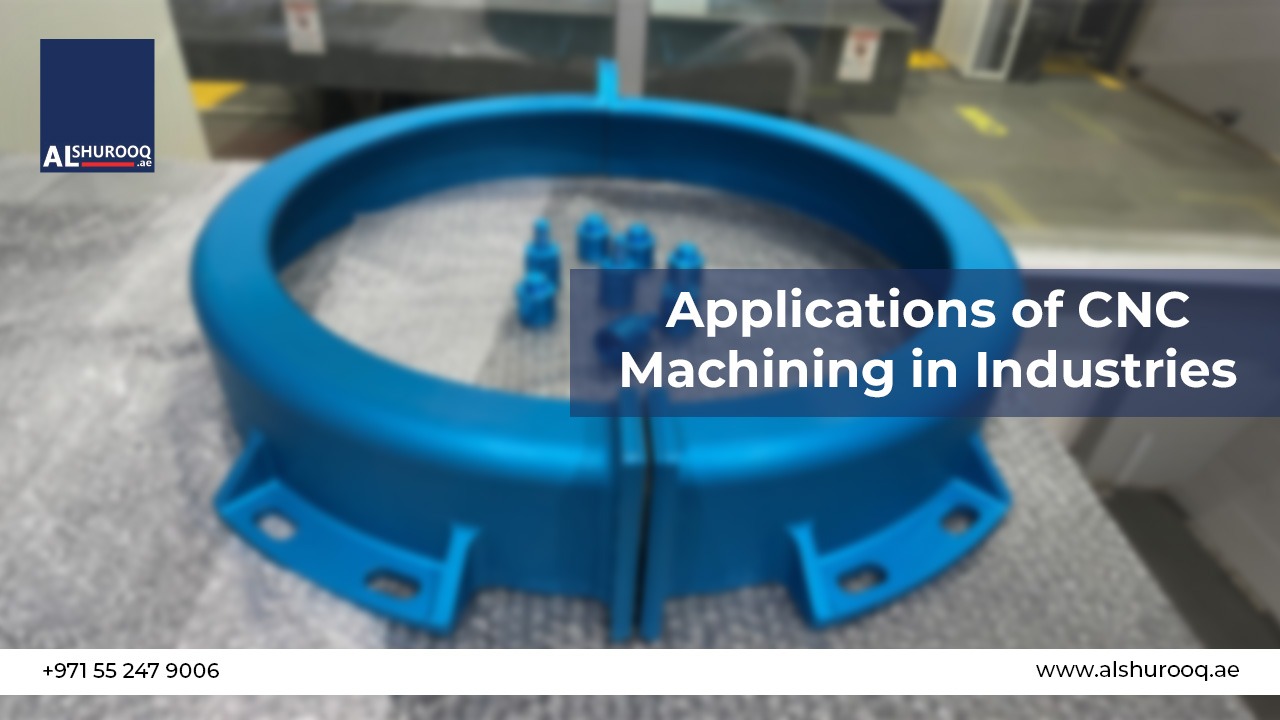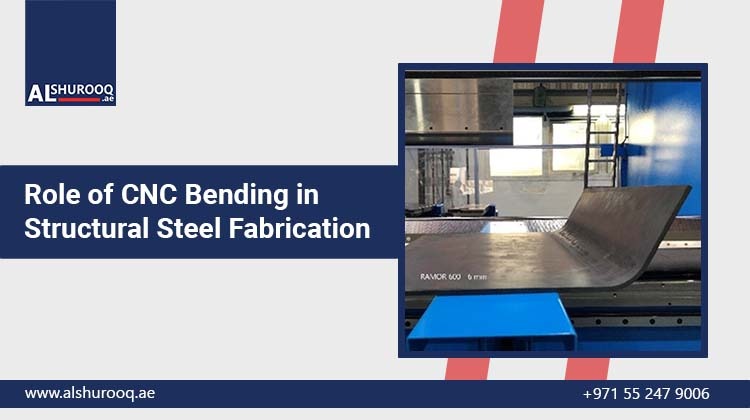Applications of CNC Machining in Industries
CNC machines have significantly revolutionized modern manufacturing by integrating advanced computer technology with automated robotic tools, allowing for unparalleled precision and efficiency that exceeds what human labor alone can achieve. These machines use sophisticated programming software to control and manipulate tools and workpieces with extraordinary accuracy, making them indispensable in industries that demand tight tolerances and complex part geometries.
The key advantage of CNC machining is that it has made possible those previously challenging or even impractical manufacturing tasks. Jobs that once required extensive manual labor or complex setups can now be completed with ease and precision using modern CNC machines. This shift has opened up a world of possibilities for manufacturers, enabling them to produce more intricate designs, reduce lead times, and improve overall product quality.
This blog will try to explain the various types of CNC machining, their applications in various industries and how they operate. You will learn about what these machines are capable of and how to choose which one to use in your specific applications.
A History of CNC Machining
The history of CNC machining dates back to the mid-20th century, a time when traditional manufacturing techniques were being enhanced by new technological innovations.
1. Early Beginnings (1940s-1950s):
- The roots of CNC machining can be traced to numerical control (NC), a precursor technology developed in the late 1940s.In 1949, John T.
Parsons, an engineer, and his team at the Massachusetts Institute of Technology (MIT) began developing methods to use punched cards to control machines,
thus giving rise to numerical control.
- By 1952, Richard Kegg and MIT had developed the first NC milling machine. It was able to automate the movements of the machine’s cutting tools using instructions provided by punched paper tape.
2. The Birth of CNC (1960s):
- The 1960s saw the introduction of computers into the machining process, transitioning NC to CNC.
- Rather than relying on physical punched tapes, machines could now be programmed using computer instructions, making the system more flexible and efficient.
3. Expansion and Commercialization (1970s-1980s):
- By the 1970s, CNC machining became widely adopted in industries like aerospace, automotive, and defense due to its ability to produce highly accurate parts.
- The introduction of CAD (Computer-Aided Design) and CAM (Computer-Aided Manufacturing) systems
integrated with CNC technology allowed for the design and programming of machines to be done digitally.
4. Advances in Technology (1990s-2000s):
- During this period, CNC machines became more sophisticated, with innovations like multi-axis machining
(e.g., 5-axis CNC machines) that allowed for even more complex and precise manufacturing.
- Automated tool changers, sensors, and feedback systems became standard in CNC machines,
enhancing efficiency and reducing human intervention in the production process.
5. Modern CNC Machining (2010s-Present):
- Today, CNC machining is an integral part of manufacturing across various industries, from aerospace to medical devices,
automotive to electronics.The integration of IoT (Internet of Things), machine learning, and automation has further improved
CNC systems, allowing for smarter manufacturing processes, real-time monitoring, and predictive maintenance.
- Additive manufacturing (3D printing) and CNC machining are now often used together to combine the strengths of both technologies,
creating innovative production techniques.
What Exactly is CNC Machining?
CNC machining is a manufacturing process in which pre-programmed computer software controls the movement of
machinery and tools. This automation allows for the precise shaping, cutting, and forming of materials such as metal,
plastic, wood, or composites into parts and products. CNC machines can perform various tasks like milling, turning,
drilling, and cutting, all with high accuracy and consistency.
Key Features of CNC Machining are Precision, Efficiency, Multi-Axis Movement, Versatility, and possibility for Automation etc.
Various Types of CNC Machines?
CNC machines come in various types, each designed to perform specific tasks with precision and efficiency. Here are the most common types of CNC machines:
1. CNC Lathes (Turning Centers):
Rotate the workpiece while cutting tools shape it by removing material.Operate on 2 to 4 axes, focusing on the X
and Z axes for precise control.Commonly used for creating cylindrical or round components such as shafts, bolts, and threads.
2. CNC Milling Machines:
Use rotating cutting tools to remove material from a stationary workpiece.Typically operate on 3 to 5 axes,
allowing for complex shapes and surfaces to be machined.Ideal for producing complex parts with features like slots, holes, and curves.
3. CNC Multi-Axis Machines:
Combine the capabilities of different CNC machines (e.g., milling, turning) into one unit,
enabling more complex parts to be produced without multiple setups.Can operate on 5 or more
axes for highly complex geometries.Used for highly detailed parts in industries like aerospace and medical device manufacturing.
4. CNC Swiss Machines:
Specialized CNC lathes that move both the tool and the material to perform intricate cutting tasks, often used for long,
slender parts.Operate on multiple axes for complex parts with high precision.Common in precision parts manufacturing,
such as screws and medical components.
5. CNC Routers:
Similar to milling machines but designed for cutting softer materials like wood, plastic, and composites.Usually 3 to 5 axes,
allowing for intricate designs and cuts.Commonly used in woodworking, sign-making, and cabinet manufacturing.
6. CNC Electrical Discharge Machines (EDM):
Use electrical sparks to erode material from the workpiece, especially in hard metals.Operate normally on 2 to 5 axes.
Commonly used for creating intricate and complex molds, dies, and small parts that require high precision.
7. CNC Grinders:
Use abrasive wheels to remove material and achieve a high level of surface finish or precision. Operate commonly on 2 to 3 axes,
depending on the complexity of the grinding task.Ideal for finishing surfaces, sharpening tools, and creating intricate features in hard materials.
8. CNC 3D Printers:
Use additive manufacturing techniques by layering material, usually plastic or metal to create 3D objects from digital files.
Typically operate on 3 to 5 axes for building complex 3D shapes.Used for rapid prototyping and low-volume production in industries like medical,
aerospace, and automotive.
What About CNC Machine Applications?
This technology fits numerous applications within various industries. From aerospace to precision parts to
intricate medical device components, no other technology rivals CNC machining because of its high capabilities.
The Aerospace, Automotive, Electronics, Dies & Mold, Industrial Machinery, ConsumerGoods, Marine, Military & Defense,
Medical & Healthcareindustries show this versatility as an essential item in modern manufacturing.
CNC machining plays a crucial role across a diverse range of industries, offering the precision, efficiency, and versatility needed
to meet modern manufacturing demands. Whether it’s producing large quantities of identical parts or manufacturing one-off prototypes,
CNC technology helps ensure that industries can achieve high-quality, reliable, and complex components.
Conclusion
CNC Machining has become a pivotal part of the modern manufacturing process. It is inevitable that
with the help of CNC machines, mass production can be upscaled with consistent quality and minimal
to no human intervention and error, which enables cutting edge industrial manufacturing.
Al Shurooq, as a CNC Machining company in Dubai,
has spearheaded this agenda to a wider customer
basewith our extensive range of CNC machining services enabling our customers to
stride forward with technology and innovation for any of their manufacturing or assembling needs.
Come, join hands with us for a better tomorrow.







